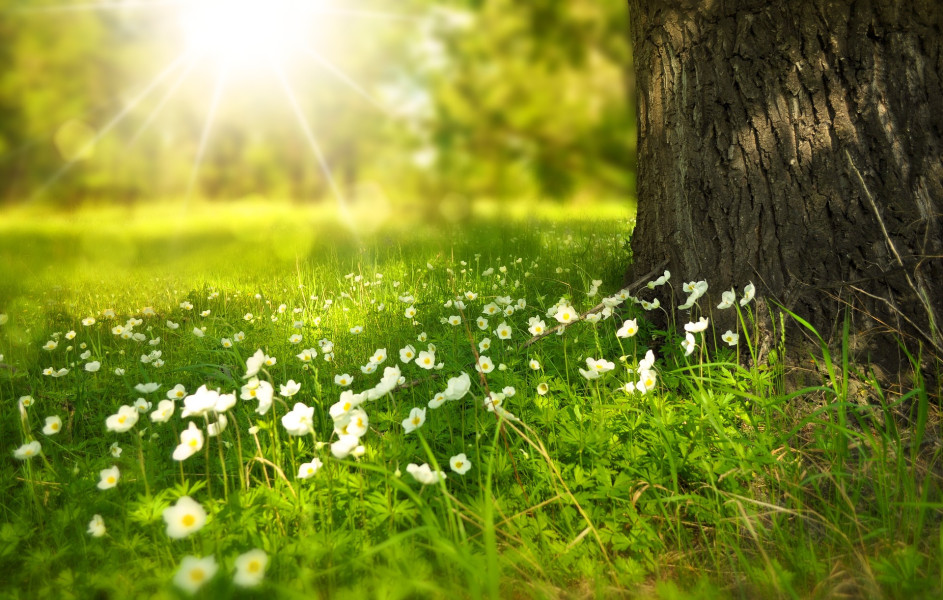
Creating a wildflower meadow in your garden is a wonderful way to add beauty, biodiversity, and a touch of nature to your outdoor space. While there are various methods to establish a wildflower meadow, using wildflower turf has proven to be one of the most successful approaches. In this comprehensive guide, we will explore the process of preparing the soil, laying wildflower turf, and providing proper maintenance to ensure the long-term success of your wildflower meadow.
Wildflower turf offers several advantages over traditional seeding methods. Unlike seeding, which only has a success rate of around 30%, wildflower turf guarantees a 100% success rate in establishing a vibrant wildflower oasis in your garden. The instant impact of wildflower turf means you can enjoy the beauty of a wildflower meadow right from day one, without the waiting period for seeds to germinate and grow.
Before laying wildflower turf, it is crucial to properly prepare the soil to eliminate competition from weeds and grasses. The process of soil preparation for wildflower turf is similar to preparing for seed sowing. However, wildflower turf thrives best in poor quality non-fertile soil, which promotes slower growth and reduces the growth of broad-leaved weeds and grasses.
To create a weed-free environment, it is essential to clear the area of all vegetation. This step should be planned well in advance, as it may require several months to completely eradicate weeds and grasses. There are several methods to achieve this, including:
Using a total herbicide: Killing off the area two or three times with a total herbicide, such as Glyphosate, is a popular method to eliminate weeds effectively.
Manual removal: Thoroughly dig through the area, manually removing weeds and grasses.
Plastic sheet method: Cover the area with a large plastic sheet at least 12 months in advance to suffocate stubborn weeds like Couch, Bindweed, and Ground Elder.
After eliminating weeds, lightly cultivate the soil to create a fine seed bed. Deep cultivation is unnecessary and may disturb dormant weed seeds. Use a rotavator or tiller to cultivate the soil, and then rake it down to a fine and smooth tilth with a metal soil rake. Remove any large stones or debris that may hinder the even growth of the wildflower turf.
Once the soil is properly prepared, it's time to lay the wildflower turf and transform your garden into a colorful haven for pollinators and wildlife.
Wildflower turf is typically delivered on a pallet in rolls or slabs. It is crucial to lay the turf within 24 hours of delivery to prevent it from deteriorating. If you are not ready to lay the turf immediately, remove it from the pallet, unroll it, and keep it watered to maintain its freshness.
Laying wildflower turf is similar to laying regular lawn turf. Follow these steps for successful installation:
Start by laying the turf in staggered rows, ensuring that the joints of the turf abut each other.
Water the turf immediately after laying to prevent it from drying out.
If you are laying the turf on a bank or slope, use small wooden pegs or bamboo canes to support the turf until it roots firmly.
To ensure the continued health and beauty of your wildflower meadow, proper maintenance and aftercare are essential. Here are some guidelines to follow:
Thoroughly water the newly laid turf during the first week, especially if the weather is dry. Ensure that the water penetrates the soil beneath the turf by lifting a corner and checking the moisture level.
Avoid letting the turf dry out before it establishes and roots, which usually takes around two to four weeks.
During extended dry spells in the first growing season, water the turf occasionally to support the wildflowers.
Wildflower turf does not require fertilizer. Avoid applying any form of fertilizer, as it may encourage the growth of grasses and reduce the prominence of wildflowers.
As your wildflower meadow matures, proper ongoing maintenance will help it thrive and flourish year after year. The specific management practices may vary depending on factors such as soil fertility, weather conditions, and personal preferences. Here are some general recommendations:
Most gardeners choose to cut down the meadow once per year during late autumn, after seedheads have set. This helps maintain the meadow's overall appearance and prevents excessive growth.
Some gardeners may opt for an interim medium height cut during the summer to keep the meadow tidy and promote a shorter sward.
Use a heavy-duty mower, strimmer, or brush cutter to carry out the cutting process. Mow the meadow short, leaving the grass at a height of around 25mm to allow light to reach the sward during winter.
Always remove the cuttings to prevent nutrient enrichment and reduce the risk of smothering the wildflowers.
Depending on the soil fertility and growing conditions, you may need to modify your management approach. Fertile soil or exceptional growing seasons can result in vigorous growth that may cause lodging or an untidy appearance.
In such cases, consider introducing an additional cut during summer to reduce the grasses' vigor, maintain a shorter sward, and promote later flowering.
An open sward during winter allows healthy plants to benefit from available light, leading to robust growth as spring approaches.
Creating a vibrant wildflower meadow using wildflower turf is a rewarding and environmentally friendly project that can bring immense beauty and ecological benefits to your garden. By following the steps outlined in this guide, you can establish a thriving wildflower meadow with a 100% success rate. Remember to provide proper maintenance and care to ensure the long-term success and enjoyment of your wildflower meadow.